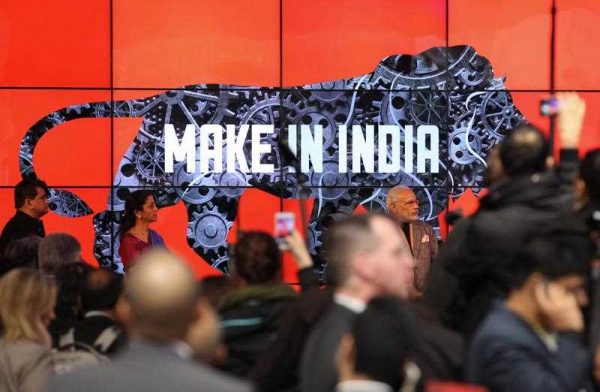In the battle of ideas, Nehru’s modernist vision of large-scale industrial production and infrastructure development won out over Gandhi’s village-centric, small-scale economic production units. The curious paradox is that both forms of production exist today. Indians have been caught between a small, dynamic, forward-looking economy and an archaic, lethargic, political and social system that sows the seeds of anticipation on the one hand and despair for its impoverished urban and rural youth on the other.
Fast forward to May 2014, when Narendra Modi of the Bharatiya Janata Party (India’s People’s Party) was elected as India’s 15th prime minister with a landslide mandate. The son of a grocer, considered socially and educationally disadvantaged by the Indian caste system, how was it that a man of such humble origins came to power? Aside from an end to the lack-lustre, corruption-laced economic performance of the Indian National Congress, Modi offered hope of a better, cleaner future. He envisaged not only a muscular India in international affairs and domestic governance, but also an investment-friendly economy that would generate jobs for the nation’s aspiring, yet unemployed, youth.
Modi’s economic strategy has been straightforward: appeal to foreign investors from China, Japan and the large Indian diaspora abroad. He has travelled to at least 29 countries so far. Some were goodwill political visits to India’s neighbours, like Bhutan and Nepal, while others were part of multilateral gatherings such as the BRICS in Brazil. But most were bilateral meetings to promote India as an investment destination.
Built into Modi’s investment focus is his ‘Make in India’ campaign. It sounds catchy and visionary, but in reality it looks like a reworking of the Nehruvian policy of import substituting industrialisation. Modi’s strategy and Nehru’s are both aimed at increasing local content (fewer imports), but they differ in significant respects. India’s economy is no longer the same. The economic importance of agriculture has declined substantially, while that for services has increased equally dramatically. But Indian industry is stagnating. Employment in agriculture remains high at nearly 50 per cent of India’s 475 million-strong workforce. Industries and services both have roughly 25 per cent.
These numbers suggest that while agriculture is employment-intensive, its productivity is low and thus rural residents are, on average, impoverished. Industries pay better, albeit for jobs in the formal sector, but jobs are scant given competitive global wage rates and uncompetitive infrastructural support.
Most of India’s employment is in the informal sector, where employment is low paying, precarious and unregulated. The services sector is a mixed bag, with both low-paying domestic work and high-salaried IT professionals. The interrelated tasks for Modi are: to make agriculture productive; raise rural incomes; and effectively reduce rural dependence, while expanding industrial and services jobs.
So will Modi’s Make in India strategy cut it? Rural development, an absolute necessity, will require spending, be it in irrigation schemes, land improvements, reducing soil salinity or building large-scale rural infrastructure. Yet few of these attract foreign or domestic private investors.
The problem is that Modi needs to appease investors by cutting back on public spending, a typical response in hard budgetary times, which compounds the agrarian crisis. Foreign investors could be interested in supply chain management logistics and contract farming for modern urban retail. These activities could be labour-intensive with higher remuneration, but they are unlikely to lift the agrarian sector to a new level of dynamism in the foreseeable future.
The best bet for Make in India lies in labour-absorbing manufacturing, like that of China. Here Modi has made some headway with investors. Hon Hai Precision Industry, Taiwan — better known as Foxconn, which builds iPhones in China — has expressed interest in investing in India, so have a number of foreign defence contractors. If Foxconn replicates the scale of its employment in China, it could be the feather in Modi’s Make in India cap.
But given Foxconn’s record on labour management and hiring of seasonal labour, and the wage-cutting compulsions pushed by Apple, Indian workers may not witness an improvement. Even assuming any job is better than none, Foxconn — like many manufacturers — is already exploring employment-dampening automation.
Defence companies, such as India’s L&T and France’s Dassault, are unlikely to make a huge dent in employment. Both employ capital-intensive production processes. Make in India in defence means first purchasing foreign equipment and only then localising an agreed-upon number of units through licensing. German high-tech manufacturers investing in India would contribute to technology and skill development, but employment could run up against automation and capital-intensity. The services industry, in which American firms have a huge advantage, likewise offers a limited number of well-paying multinational jobs. And skill and educational requirements for such services jobs would exclude most Indians.
Should large-scale investments be forthcoming, there is another caveat to a favourable Make in India outcome. Linkages between services and manufacturing — and across different manufacturing sectors — are important to realising Modi’s Make in India, if not immediately then certainly over the long haul. Until it moves away from ad hoc exhortations of foreign investments to a strategic form of intervention, Modi’s Make in India — like Nehru’s import substituting industrialisation — is unlikely to meet the aspirations of India’s youth. Make in India is a good idea, but its proper implementation is still uncharted.
Anthony P. D’Costa is chair and professor of contemporary Indian studies at the Australia India Institute and the School of Social and Political Sciences, University of Melbourne. He is the author of International Mobility, Global Capitalism, and Changing Structures of Accumulation: Transforming the Japan–India IT relationship.


For an alternative view on “Make in India” the author may want to see
http://economictimes.indiatimes.com/news/economy/policy/can-india-really-be-the-next-china/articleshow/49548115.cms